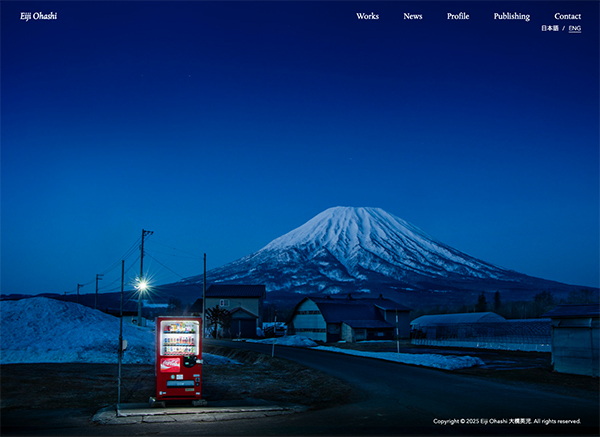Illuminating The Quiet: Eiji Ohashi’s Vending Machine Photography in Japan
posted Monday, August 11, 2025 at 5:16 PM EST

When I first looked through Japanese photographer Eiji Ohashi’s body of work on vending machines, titled “Roadside Lights,” which is a series of night landscapes he’s been working on since 2008 and which he mostly shot in the middle of various snowstorms during that time span, I thought they were simply charming. I even liked the personal anecdote that reveals why he felt he wanted to photograph them. “My encounter with vending machines began when I lived in Wakkanai, the northernmost city in Japan. Winters in the north are harsh, with blizzards so strong that the snow seems to fall upwards,” he says. “Once, while driving in one of these blizzards, the road disappeared behind the snow, and I completely lost my sense of direction. But then I saw the familiar glow of the vending machines by the side of the road. They let me know where I was going. Since then, vending machines have taken on a special meaning for me.”
But the more I looked at the photographs, the more I felt there was more to his images than just being “charming.”
In fact, there are a couple of compositional qualities that I believe his images share with the great American realist painter, Edward Hopper, who created some of the most well-known American paintings of the first half of the twentieth century.
Echoes of Edward Hopper
The first is that Ohashi, like Hopper, often portrays scenes with two different, distinct light sources, one artificial and one natural. With Hopper, you can see this clearly in one of his most well-known paintings, “Nighthawks,” which is illuminated by artificial light; there is additional natural lighting. What’s intriguing about Ohashi’s use of lighting is that he takes it a step further. He not only includes both artificial and natural lighting, but also how that lighting is used in the scene: In the landscape portions, it’s generally a soft, dim light that reflects off of the objects (trees, mountains, houses, etc.). But when photographing the vending machines, they aren’t illuminated by reflected light. They emit a rather bright, harsh light from within. It’s one of the ways the images produce a sort of tension, a surrealistic quality, or an almost "convulsive beauty," a term coined by André Breton, that refers to a type of beauty found in the unsettling, unexpected, and even disturbing aspects of reality.
The other quality he shares with Hopper is how both artists use abstraction in realistic images. Hopper did this by painting abstract elements within a realistic setting. Take Hopper's “Early Sunday Morning” If you only look at the top sixth of the painting and cover up the rest of the painting, it’s simply one long blue rectangle with a black box to the right of it. An abstract painting.
Ohashi is quite inventive in weaving abstract elements throughout his images by taking the images during or after a snowstorm at night. The snow transforms any realistic details in the scene into abstract shapes and forms. The shadows from reflected light additionally achieve this abstract quality. Yet, it’s all taking place in a realistic landscape. Again, it’s another element of compositional tension, again producing a surrealistic quality to the scenes.
A Stylistic Clash of Sorts
There’s also a third, rather interesting element that you don’t see in Hopper’s paintings. In Ohashi’s photos, you have two modernist styles of representation appearing within the same image: The intense graphic quality you see within the frame of the vending machines, which have highly saturated colors and reflective surfaces, along with logos, labels, and other forms of advertising. In other words, it looks like a Pop Art painting, something Andy Warhol or James Rosenquist might have produced.
But each vending machine is still set within a much different type of landscape, which often has a Romantic or anachronistic quality to it. And it’s here where the contrast often seems most vivid, between the noisy, shiny promise of buying a product offered by the vending machine set within the larger, somber, quiet reality of the real world that surrounds it.
The Roadside Lights Images
You can view all the images in the Roadside Lights series on his website, in the following galleries:
Buy Eiji Ohashi’s Book, Roadside Lights Seasons: Winter
You can buy Eiji Ohashi’s book, Roadside Lights Seasons: Winter, on Amazon or visit his website for more information.